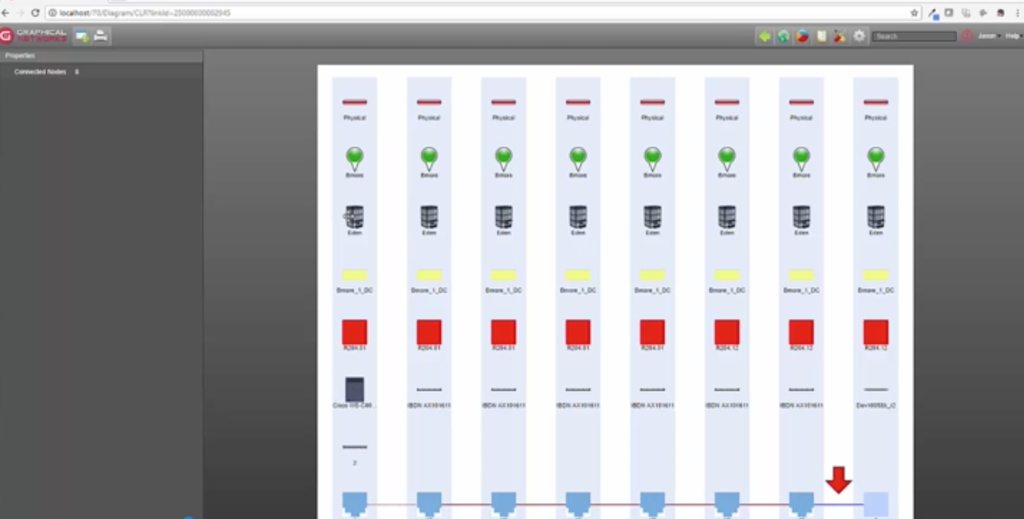
Knowing what’s connected to what: it’s one of the primary reasons we document the network. But this knowledge can’t just exist in a vacuum…so what’s the point of knowing what and where your connections are?
Let’s not beat around the bush: cabling has a tendency to become ‘spaghetti’ fast, especially as your infrastructure grows. Even in the best of circumstances, understanding where your connections are, and how they are connected, is vital for capacity planning, security, and troubleshooting.
Having this knowledge is real a lifesaver when you need to trace an IT outage. If you’re dealing with an IT outage, you need to be able to trace a connection (see its physical path), and follow the connection from one device to another until you get to its stopping point. It doesn’t matter what you’re managing: you need to be able to trace connections for inside plant cabling, wiring closets, and to any outside plant equipment you use.
How to do this? Well, you can always pull some shady James Bond maneuvers, of course. You could do something like a tracert or SSH into your switch or router and read some connection data to get an idea of a path. The problem? You can’t get a full picture of port-to-port connections. You also won’t get the patch information that exists between most devices.
The better option? Trace a path automatically. netTerrain, for example, generates a circuit layout record (CLR) aka a detailed physical path trace using the connection information that is in the automatically-created diagrams. Instead of just seeing a device’s closest connection, you can view a connection’s endpoints (and what is connected to those points and so on). The CLR drills down to your device’s starting point, and, to what it connects to. You generate an up-to-date CLR with a single double click and you’re in: you can see everything you need to understand the full path of a connection.

To reiterate, the circuit layout record is self-generated: there is nothing to create and nothing to maintain. With it, you can trace paths and much more. The CLR comes in handy when you’re capacity planning: without it, how can you know what you have, what you need, and where to put everything? The CLR also helps out with decommissioning equipment as you can’t just take decommission a card by taking out the immediate connections (you’ve got to take out both ends). With the CLR, you can easily see all the connections that need to be decommissioned.
Bottom line? Being able to access a circuit layout record in your DCIM solution is just one of the many benefits of IT visualization software.